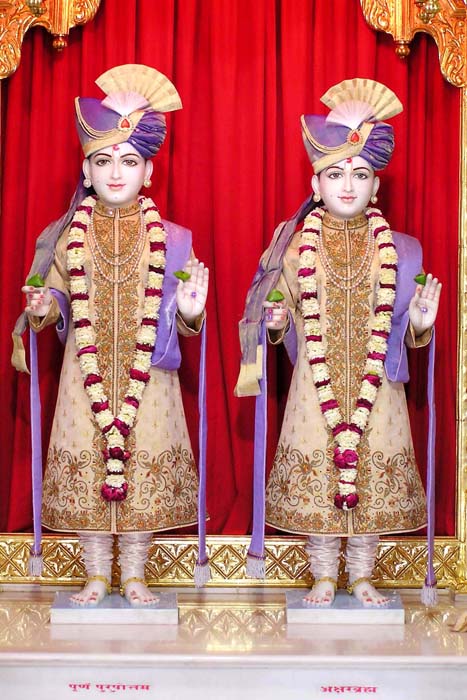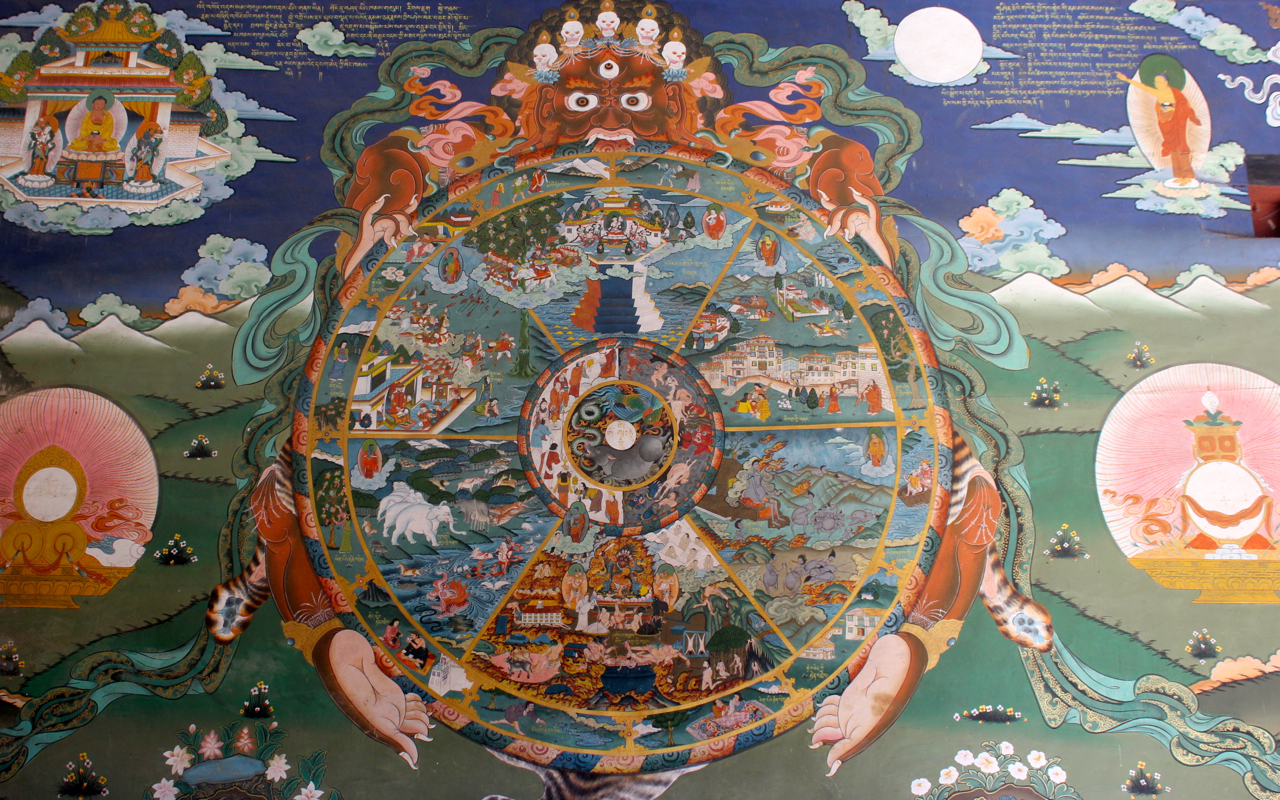|
Jiva
''Jiva'' ( sa, जीव, IAST: ) is a living being or any entity imbued with a life force in Hinduism and Jainism. The word itself originates from the Sanskrit verb-root ''jīv'', which translates as 'to breathe' or 'to live'. The ''jiva'', as a metaphysical entity, has been described in various scriptures such as the Bhagavad Gita and the Upanishads. Each subschool of Vedanta describes the role of the ''jiva'' with the other metaphysical entities in varying capacities. Described in the scriptures A common metaphysical entity discussed in the scriptures (such as the Bhagavad Gita, Upanishad and Vachanamrut) in the seven schools of Vedanta is the ''jiva'' or ''atman'': the soul or self. Bhagavad Gita Chapter 2 of the Bhagavad Gita contains verses describing the ''jiva''. For example, the ''jiva'' is described as eternal and indestructible in chapter 2, verse 20: Upanishads बालाग्रशतभागस्य शतधा कल्पितस्य च । ... [...More Info...] [...Related Items...] OR: [Wikipedia] [Google] [Baidu] |
Paramatma
''Paramatman'' (Sanskrit: परमात्मन्, IAST: Paramātman) or ''Paramātmā'' is the Absolute '' Atman'', or supreme Self, in various philosophies such as the Vedanta and Yoga schools in Hindu theology, as well as other Indian religions like Sikhism. ''Paramatman'' is the "Primordial Self" or the "Self Beyond" who is spiritually identical with the absolute and ultimate reality. Selflessness is the attribute of ''Paramatman'', where all personality/individuality vanishes. Etymology The word stem ''paramātman'' (परमात्मन्, pronounced , its nominative singular being ''paramātmā'' — परमात्मा, pronounced ) is formed from two words, ''parama'', meaning "supreme" or "highest", and ''ātma'', which means individual self. The word '' Ātman'' generally denotes the Individual Self, but by the word ''Paramatman'' which word also expresses Boundless Life, Boundless Consciousness, Boundless Substance in Boundless Space, is meant the ''A ... [...More Info...] [...Related Items...] OR: [Wikipedia] [Google] [Baidu] |
Advaita Vedanta
''Advaita Vedanta'' (; sa, अद्वैत वेदान्त, ) is a Hindu sādhanā, a path of spiritual discipline and experience, and the oldest extant tradition of the orthodox Hindu school Vedānta. The term ''Advaita'' (literally "non-secondness", but usually rendered as " nondualism", and often equated with monism) refers to the idea that '' Brahman'' alone is ultimately real, while the transient phenomenal world is an illusory appearance (''maya'') of Brahman. In this view, (''jiv) Ātman'', the experiencing self, and ''Ātman-Brahman'', the highest Self and Absolute Reality, is non-different. The ''jivatman'' or individual self is a mere reflection or limitation of singular ''Ātman'' in a multitude of apparent individual bodies. In the Advaita tradition, '' moksha'' (liberation from suffering and rebirth) is attained through recognizing this illusoriness of the phenomenal world and disidentification from the body-mind complex and the notion of 'do ... [...More Info...] [...Related Items...] OR: [Wikipedia] [Google] [Baidu] |
Vishishtadvaita
Vishishtadvaita ( IAST '; sa, विशिष्टाद्वैत) is one of the most popular schools of the Vedanta school of Hindu philosophy. Vedanta literally means the in depth meaning ''of the Vedas.'' ''Vishisht Advaita'' (literally "Advaita means non- Duality") is a non-dualistic school of Vedanta philosophy. It is non-dualism of the qualified whole, in which Brahman alone is seen as the Supreme Reality, but is characterized by multiplicity. It can be described as qualified monism or qualified non-dualism or attributive monism. It is a school of Vedanta philosophy which believes in all diversity subsuming to an underlying unity. Ramanuja, the 11–12th century philosopher and the main proponent of Vishishtadvaita philosophy contends that the Prasthanatrayi ("The three courses"), namely the Upanishads, the Bhagavad Gita, and the Brahma Sutras are to be interpreted in a way that shows this unity in diversity, for any other way would violate their consistency. Vedan ... [...More Info...] [...Related Items...] OR: [Wikipedia] [Google] [Baidu] |
Ishvara
''Ishvara'' () is a concept in Hinduism, with a wide range of meanings that depend on the era and the school of Hinduism. Monier Monier Williams, Sanskrit-English dictionarySearch for Izvara University of Cologne, Germany In ancient texts of Hindu philosophy, depending on the context, ''Ishvara'' can mean supreme Self, ruler, lord, king, queen or husband. In medieval era Hindu texts, depending on the school of Hinduism, ''Ishvara'' means God, Supreme Being, personal God, or special Self. ''Ishvara'' is primarily an epithet of Shiva.James Lochtefeld, "Ishvara", The Illustrated Encyclopedia of Hinduism, Vol. 1: A–M, Rosen Publishing. , page 306 In Shaivism, ''Ishvara'' is an epithet of Shiva. For many Vaishnavas, it is synonymous with Vishnu, like in his epithet of Venkateswara. In traditional Bhakti movements, ''Ishvara'' is one or more deities of an individual's preference ( Iṣṭa-devatā) from Hinduism's polytheistic canon of deities. In modern-day sectarian movements s ... [...More Info...] [...Related Items...] OR: [Wikipedia] [Google] [Baidu] |
Vedanta
''Vedanta'' (; sa, वेदान्त, ), also ''Uttara Mīmāṃsā'', is one of the six (''āstika'') schools of Hindu philosophy. Literally meaning "end of the Vedas", Vedanta reflects ideas that emerged from, or were aligned with, the speculations and philosophies contained in the Upanishads, specifically, knowledge and liberation. Vedanta contains many sub-traditions, all of which are based on a common group of texts called the "Three Sources" ('' prasthānatrayī''): '' the Upanishads'', the ''Brahma Sutras'' and the '' Bhagavad Gita''. All Vedanta traditions contain extensive discussions on ontology, soteriology and epistemology, though there is much disagreement among the various schools. The main traditions of Vedanta are: ''Advaita'' (non-dualism), '' Bhedabheda'' (difference and non-difference), '' Suddhadvaita'' (pure non-dualism), ''Tattvavada ( Dvaita)'' (dualism), and '' Vishishtadvaita'' (qualified non-dualism). Modern developments in Vedanta include Ne ... [...More Info...] [...Related Items...] OR: [Wikipedia] [Google] [Baidu] |
Ātman (Hinduism)
''Ātman'' (; sa, आत्मन्) is a Sanskrit word that refers to the (universal) Self or self-existent essence of individuals, as distinct from ego ('' Ahamkara''), mind ('' Citta'') and embodied existence ('' Prakṛti''). The term is often translated as soul, but is better translated as "Self," as it solely refers to pure consciousness or witness-consciousness, beyond identification with phenomena. In order to attain moksha (liberation), a human being must acquire self-knowledge ('' Atma Gyaan or Brahmajnana''). ''Atman'' is a central concept in the various schools of Indian philosophy, which have different views on the relation between ''Atman'', individual Self ('' Jīvātman''), supreme Self ('' Paramātmā'') and, the Ultimate Reality ('' Brahman''), stating that they are: completely identical ( Advaita, Non-Dualist), completely different ( Dvaita, Dualist), or simultaneously non-different and different ( Bhedabheda, Non-Dualist + Dualist). The six orthodo ... [...More Info...] [...Related Items...] OR: [Wikipedia] [Google] [Baidu] |
Akshar-Purushottam Darshan
Akshar-Purushottam Darshan (''Akṣara-Puruṣottama Darśana'') or Aksarabrahma-Parabrahma-Darsanam, "Akshar-Purushottam philosophy," is a designation used by BAPS-swamis as an alternative name for the Swaminarayan Darshana, Swaminarayan's view or teachings, to distinguish it from other Vedanta-traditions. It is based on Swaminarayan's distinction between Parabrahman (Purushottam, Narayana) and Aksharbrahman as two distinct eternal realities, which in this view sets Swaminarayan's teachings apart from other Vedanta-traditions. It is an essential element for the BAPS and it's ''Akṣara-Puruṣottama Upāsanā'' ( "worship"),Swaminarayan sanshtaWorship of God with the Guru - Akshar Purushottam Philosophy/ref> in which Purushottam c.q. Parabrahman is present in a lineage of Aksharbrahman guru's, who are the abode (''akshar'') of God. Meaning In Swaminarayan theology, a distinction is made between Para Brahman, the highest Brahman which is Purushottam Narayan (God), who is re ... [...More Info...] [...Related Items...] OR: [Wikipedia] [Google] [Baidu] |
Madhvacharya
Madhvacharya (; ; CE 1199-1278 or CE 1238–1317), sometimes anglicised as Madhva Acharya, and also known as Purna Prajna () and Ānanda Tīrtha, was an Indian philosopher, theologian and the chief proponent of the '' Dvaita'' (dualism) school of Vedanta. Madhva called his philosophy '' Tattvavāda'' meaning "arguments from a realist viewpoint". Madhvacharya was born on the west coast of Karnataka state in 13th-century India. As a teenager, he became a Sanyasi (monk) joining Brahma-sampradaya guru Achyutapreksha, of the Ekadandi order. Madhva studied the classics of Hindu philosophy, and wrote commentaries on the Principal Upanishads, the '' Bhagavad Gita'' and the Brahma Sutras ('' Prasthanatrayi''), and is credited with thirty seven works in Sanskrit. His writing style was of extreme brevity and condensed expression. His greatest work is considered to be the '' Anuvyakhyana'', a philosophical supplement to his bhasya on the Brahma Sutras composed with a poetic structure. ... [...More Info...] [...Related Items...] OR: [Wikipedia] [Google] [Baidu] |
Hinduism
Hinduism () is an Indian religion or '' dharma'', a religious and universal order or way of life by which followers abide. As a religion, it is the world's third-largest, with over 1.2–1.35 billion followers, or 15–16% of the global population, known as Hindus. The word ''Hindu'' is an exonym, and while Hinduism has been called the oldest religion in the world, many practitioners refer to their religion as '' Sanātana Dharma'' ( sa, सनातन धर्म, lit='the Eternal Dharma'), a modern usage, which refers to the idea that its origins lie beyond human history, as revealed in the Hindu texts. Another endonym is ''Vaidika dharma'', the dharma related to the Vedas. Hinduism is a diverse system of thought marked by a range of philosophies and shared concepts, rituals, cosmological systems, pilgrimage sites, and shared textual sources that discuss theology, metaphysics, mythology, Vedic yajna, yoga, agamic rituals, and temple building, among other to ... [...More Info...] [...Related Items...] OR: [Wikipedia] [Google] [Baidu] |
Darśana
Hindu philosophy encompasses the philosophies, world views and teachings of Hinduism that emerged in Ancient India which include six systems ('' shad-darśana'') – Samkhya, Yoga, Nyaya, Vaisheshika, Mimamsa and Vedanta.Andrew Nicholson (2013), Unifying Hinduism: Philosophy and Identity in Indian Intellectual History, Columbia University Press, , pages 2–5 In Indian tradition, the word used for philosophy is Darshana (Viewpoint or perspective), from the Sanskrit root ('to see, to experience'). These are also called the Astika (theistic) philosophical traditions and are those that accept the Vedas as an authoritative, important source of knowledge. Ancient and medieval India was also the source of philosophies that share philosophical concepts but rejected the Vedas, and these have been called (heterodox or non-orthodox) Indian philosophies. Nāstika Indian philosophies include Buddhism, Jainism, Chārvāka, Ājīvika, and others.P Bilimoria (2000), Indian Philosophy ... [...More Info...] [...Related Items...] OR: [Wikipedia] [Google] [Baidu] |
Jīva (Jainism)
''Jīva'' ( sa, जीव) or ''Atman'' (; sa, आत्मन्) is a philosophical term used within Jainism to identify the soul. As per Jain cosmology, ''jīva'' or soul is the principle of sentience and is one of the '' tattvas'' or one of the fundamental substances forming part of the universe. The Jain metaphysics, states Jagmanderlal Jaini, divides the universe into two independent, everlasting, co-existing and uncreated categories called the ''jiva'' (soul) and the ''ajiva'' ( sa, अजीव non-soul). This basic premise of Jainism makes it a dualistic philosophy. The ''jiva'', according to Jainism, is an essential part of how the process of karma, rebirth and the process of liberation from rebirth works. Soul substance Jains regard soul as one of the six fundamental and eternal substances ('' dravyas'') which forms the universe. The two states of soul substance are mentioned in the Jain texts. These are — Svābhva (pure or natural) and Vibhāva (impure or unna ... [...More Info...] [...Related Items...] OR: [Wikipedia] [Google] [Baidu] |
Saṃsāra
''Saṃsāra'' (Devanagari: संसार) is a Pali/Sanskrit word that means "world". It is also the concept of rebirth and "cyclicality of all life, matter, existence", a fundamental belief of most Indian religions. Popularly, it is the cycle of death and rebirth. ''Saṃsāra'' is sometimes referred to with terms or phrases such as transmigration/reincarnation, karmic cycle, or Punarjanman, and "cycle of aimless drifting, wandering or mundane existence". The concept of ''saṃsāra'' has roots in the post-Vedic literature; the theory is not discussed in the Vedas themselves. It appears in developed form, but without mechanistic details, in the early Upanishads. The full exposition of the ''saṃsāra'' doctrine is found in Śramaṇic movements such as early Buddhism and Jainism, as well as various schools of Hindu philosophy after about the mid-1st millennium BCE. The ''saṃsāra'' doctrine is tied to the karma theory of Hinduism, and the liberation from ''saṃs� ... [...More Info...] [...Related Items...] OR: [Wikipedia] [Google] [Baidu] |







